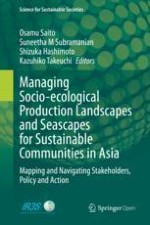
Open Access 2020 | OriginalPaper | Chapter
1. Introduction: Socio-ecological Production Landscapes and Seascapes
Authors : Osamu Saito, Suneetha M Subramanian, Shizuka Hashimoto, Kazuhiko Takeuchi
Published in: Managing Socio-ecological Production Landscapes and Seascapes for Sustainable Communities in Asia
Publisher: Springer Singapore
Activate our intelligent search to find suitable subject content or patents.
Select sections of text to find matching patents with Artificial Intelligence. powered by
Select sections of text to find additional relevant content using AI-assisted search. powered by